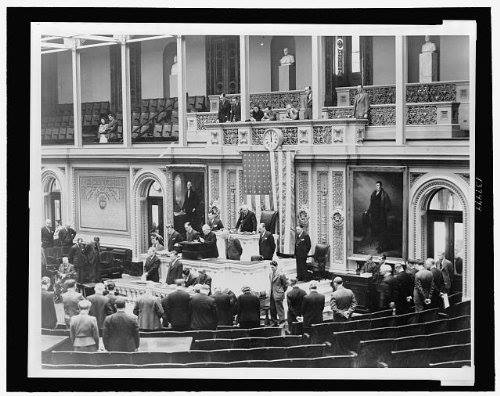
Today in Feminist History is our daily recap of the major milestones and minor advancements that shaped women’s history in the U.S.—from suffrage to Shirley Chisholm and beyond. These posts were written by, and are presented in homage to, our late staff historian and archivist, David Dismore.
January 5, 1944: It looks like a great year ahead for the Equal Rights Amendment!
There were already a number of reasons for optimism, but an announcement today greatly increased the chances of a vote by both Houses of Congress. Representative Pat Cannon, Democrat of Florida, said that he intends to get enough signatures on a discharge petition (218 out of 435 House members) to get the amendment out of the House Judiciary Committee and force a vote in the full House. It has already been approved by the Senate Judiciary Committee, and there are no remaining obstacles to a vote by the entire Senate.
Today’s announcement comes at a particularly opportune time, because momentum for passage of the ERA is increasing, and this should give it a further boost. In the beginning of the struggle, the sole supporter of the ERA was the National Woman’s Party. It called for “absolute equality” at its first national convention after passage of the 19th Amendment, and in July, 1923, used the occasion of the 75th anniversary of the first women’s rights convention in Seneca Falls to announce the text of the ERA, and that it would be introduced in Congress later that same year.

The original wording of the ERA was: “Men and women shall have equal rights throughout the United States and every place subject to its jurisdiction.” The wording was changed last year and Section One now reads: “Equality of rights under the law shall not be denied or abridged by the United States or by any State on account of sex.” Section Two says: “Congress and the several States shall have power, within their respective jurisdictions, to enforce this article by appropriate legislation.” Section Three reads: “This amendment shall take effect five years after the date of ratification.”
Over the past 21 years, many organizations have endorsed the ERA In its 1940 Platform, the Republican Party called for “An amendment to the Constitution providing for equal rights for men and women,” and a drive will be made again this summer to get Democrats to follow suit in their 1944 Platform. Twenty-four national organizations now officially favor the Equal Rights Amendment, the most prestigious of them the National Federation of Business and Professional Women’s Clubs. All two dozen groups have banded together into the Women’s Joint Legislative Committee for Equal Rights in order to coordinate their efforts.
Opposition remains, of course. The reason Democrats didn’t endorse four years ago was because of Eleanor Roosevelt’s concerns that the E.R.A. would invalidate so-called “protective” laws that apply only to women workers, and that women hadn’t joined unions in large enough numbers to protect themselves. The strongest opposition is still from unions, even some which are predominantly female, such as the National Women’s Trade Union League and the Congress of Women Auxiliaries of the C.I.O. But according to Alice Paul, author of the ERA, opposition is lessening because of the Fair Labor Standards Act and the fact that women are now joining unions in unprecedented numbers.
One attempt to get unions to switch sides is being made by Vivien Kellems, representing the Connecticut Committee for the Equal Rights Amendment. Today she wrote to labor leaders William Green, Philip Murray and John L. Lewis, asking for their views. She said that not a single union or labor leader has as yet declared support for the E.R.A., and felt that this was probably “due to the fact that much misunderstanding and prejudice surround the subject and many well-meaning but misguided people have feared it was directed at so-called protective legislation for women.”
Little by little, the National Woman’s Party is showing that “protective” laws are really “restrictive” laws that make it harder for women to compete with men for jobs. Once this is proven to a sufficient number of people, the way should be clear for ERA’s adoption.
If the Equal Rights Amendment is successfully extracted from committee and put to a vote in the full House as well as the Senate, proponents should be able to make the case during the floor debate that laws which truly “protect” should apply to both sexes, and that those which “restrict” should apply to neither, and a favorable vote could be obtained.
If it is approved by two-thirds of both House and Senate, and sent to the States for ratification, 36 out of 48 being required, there’s a good chance the ERA could be in the Constitution by July 19, 1948—which would be the perfect way to celebrate the 100th anniversary of Seneca Falls!





